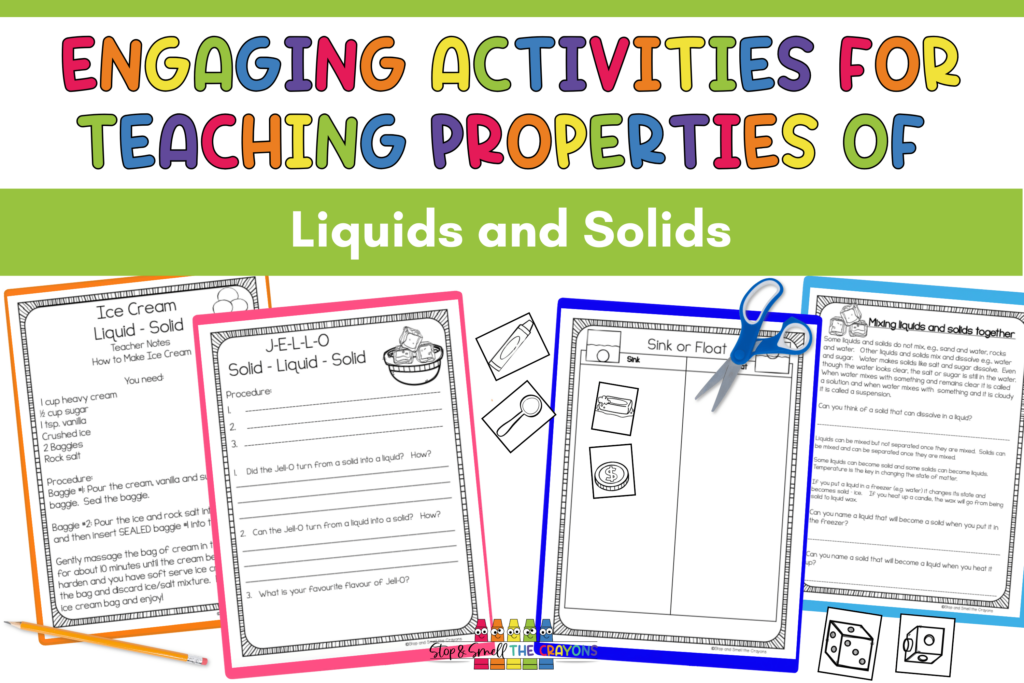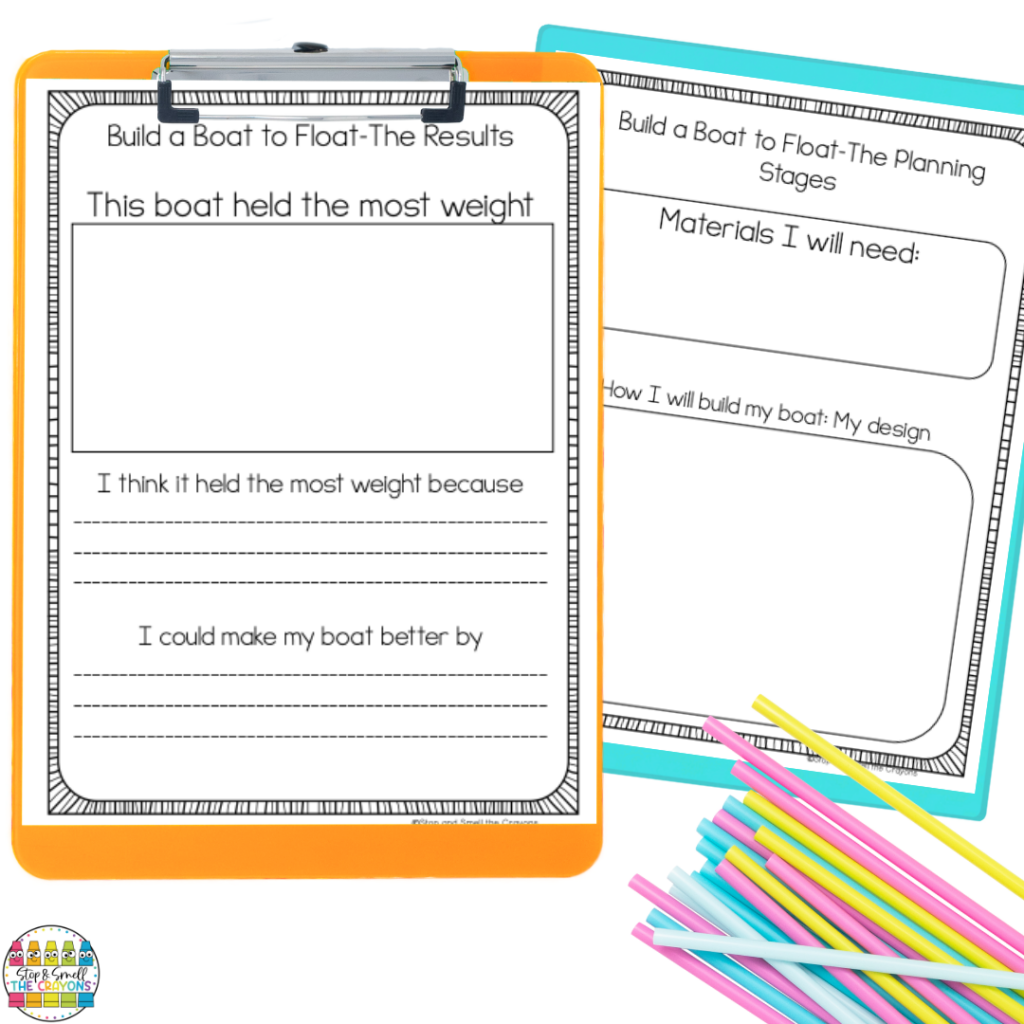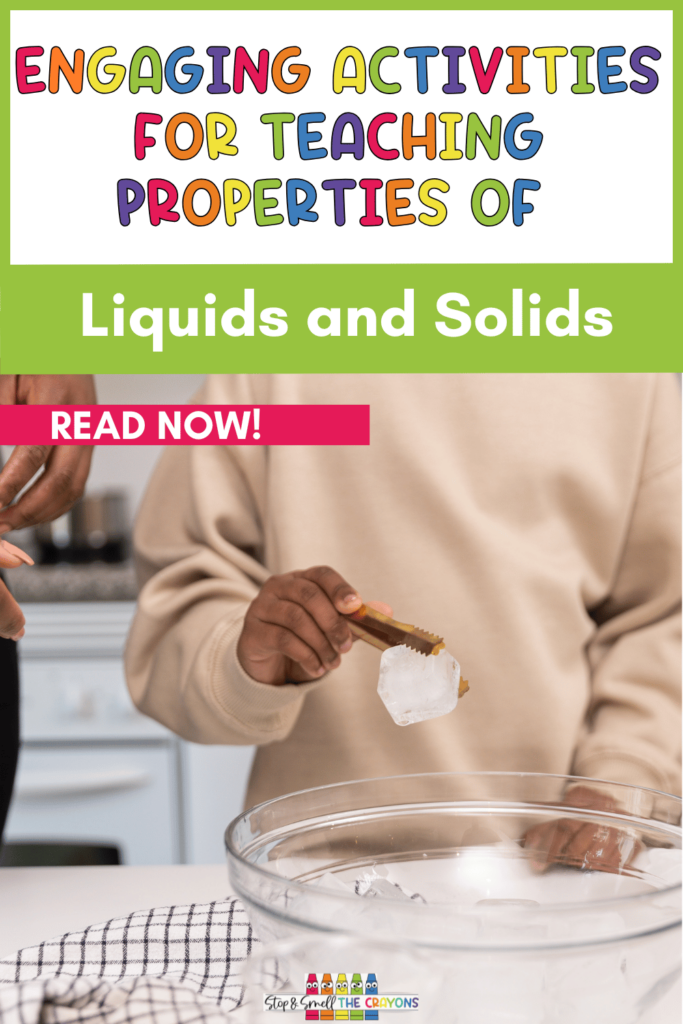Have you ever had your students question why water flows but ice stays put? Or why honey moves slower than juice when poured? Exploring liquids and solids in a hands-on way can spark curiosity and deepen understanding of the world around us. In my Properties of Liquids and Solids science unit, I keep my second graders engaged with activities that bring these concepts to life. From investigating how different liquids flow to experimenting with solids that change states, these lessons make science exciting and interactive. If you’re looking for ways to make liquids and solids more engaging for your students, you’re in the right place!

Hands-On Exploration with Liquids and Solids
Nothing excites second graders about science more than hands-on investigations, and liquids and solids are the perfect concepts to explore through observation and experimentation. I like to kick off with a simple, but engaging, sorting activity. Using a mix of real objects, photos, or a digital slideshow, I have my students identify which items are liquids and which ones are solids. This sparks great discussion as they start recognizing key characteristics, such as liquid flowing and solids keeping their shape.

Once they’ve made their predictions, we move into real experimentation. One of their favorite activities is the flow test. We compare how fast different liquids move. I set up jars of water, syrup, oil, and juice. Then, my students make predictions: Which liquid will move the fastest? The slowest? Watching thick honey ooze down a tilted tray compared to water rushing past is always a “wow” moment!
Another crowd-pleaser is the sink-or-float experiment. With a basin of water, my students test a variety of solids and liquids to see which stay on the surface and which sink. They quickly learn that size and weight aren’t the only factors because buoyancy is at play! We also discuss real-world applications, such as why boats float, and some liquids don’t mix with water.
These hands-on activities are fun but also lay the groundwork for deeper understanding. As our students test, observe, and discuss, they naturally start asking “why?”. This sets the stage for our next big investigations.
Investigating How Liquids and Solids Interact
Once my students have a solid grasp (pun intended!) of liquids and solids, we explore what happens when they interact. This is where the real magic happens. We take part in experiments that spark curiosity and get our students thinking like scientists.
One of my favorite investigations is mixing and dissolving. We test what happens when we combine different solids with liquids. Some examples are sugar in water, salt in water, and even sand in water. My students quickly notice that some solids disappear (hello, solutions!) while others settle at the bottom (suspensions!). This leads to a discussion about why some things dissolve while others don’t. And. . . it becomes the perfect opportunity to introduce key vocabulary in a way that sticks.

Another exciting experiment is stacking liquids. This one always amazes my students! Using liquids like corn syrup, dish soap, water, oil, and rubbing alcohol, we carefully pour each one into a clear container. We watch as they settle into layers instead of mixing. Seeing their faces light up when they realize that some liquids are “heavier” than others makes the setup totally worth it.
Of course, I can’t forget absorption experiments. What second grader doesn’t love getting a little messy? We test different materials like paper towels, sponges, plastic wrap, and foil to see which ones soak up liquids and which ones repel them. This simple test helps my students understand real-world applications, like why raincoats keep us dry and why we use napkins instead of plastic bags to clean up spills.
With each activity, our students are predicting, observing, and discussing, all while having fun! They’re making real-world connections that help them see science everywhere.
Exploring How Liquids and Solids Can Change States
Once my students have explored the properties of liquids and solids, it’s time for one of the most exciting parts of our unit, which is watching matter change before our eyes! Seeing a solid become a liquid (or vice versa) is always amazing for second graders. The hands-on investigations make these concepts memorable.
We start with a simple melting experiment. I bring in a few everyday solids like ice cubes, chocolate, butter, and wax. I have my students predict which will melt first and discuss what factors might speed up or slow down the process. Then we test it! Watching an ice cube slowly disappear while chocolate softens much faster leads to great conversations about heat and temperature.

I can’t teach this concept without making Jell-O! This experiment perfectly demonstrates how a solid can dissolve into a liquid and then return to a solid with temperature changes. My students love making predictions about how long the Jell-O will take to set. It’s a great way to reinforce key vocabulary like dissolve, solution, and solidification. Plus, they get a tasty treat at the end!
Another favorite is our crayon melting art project. We use a hair dryer to melt old crayons onto a canvas or thick paper. Doing so creates colorful swirls and patterns. Then, as the wax cools, my students see it harden back into a solid. This experiment brings creativity while reinforcing scientific concepts, making it a perfect blend of science and art!
To take it one step further, we explore liquids turning into solids with ice cream-making. Using a simple bag-shaking method with ice, salt, and cream, my students get hands-on experience with how cold temperatures cause liquids to freeze. Plus, they love getting to eat their science experiment when it’s done!
The “Why” Behind Learning About Liquids and Solids
Before we wrap up, I always like to take a step back and help students (and even teachers!) see why learning about liquids and solids matters beyond the classroom. Sure, these activities are fun and engaging. They also build foundational science skills that will carry over into more complex concepts later on.

Understanding liquids and solids helps our students make sense of the world around them. They recognize that melting, freezing, dissolving, and absorbing aren’t just things that happen in science class. They’re part of everyday life. These real-world connections make science meaningful, whether they’re watching ice cubes melt in their drink, spreading butter on toast, or wondering why some things float while others sink.
These investigations also help develop critical thinking and problem-solving skills. As our students predict, observe, and analyze results, they learn to think like scientists. They ask questions, test ideas, and use evidence to explain what’s happening. Skills that are useful in all areas of learning.
Plus, these hands-on activities spark curiosity. By making science fun and interactive, we’re helping our students develop a love for learning that can stay with them as they continue their STEM education. Who knows? These early experiments might just inspire the next great scientist!
Bringing It All Together

To wrap up my liquids and solids unit, I like to give my students a chance to apply what they’ve learned through a fun, open-ended challenge. One of my go-to activities is the Build-a-Boat Challenge. My students design and test their own floating structures using materials like foil, straws, and plastic containers. Watching them apply their understanding of buoyancy, absorption, and material properties to create boats that actually float and sometimes hold weight is the perfect way to tie everything together.
We also revisit some of our biggest takeaways from the unit. What was the most surprising experiment? Which investigation made them think the most? Our students reinforce key concepts and build confidence in their scientific thinking by reflecting on their learning. This unit is always a hit, and I love seeing my students get excited about discovering how liquids and solids work in the world around them.
Making Science Hands-On and Memorable
Teaching liquids and solids in second grade is so much more than just defining states of matter. It’s about sparking curiosity, encouraging exploration, and making science come alive. Through hands-on investigations, my students don’t just learn about the properties of liquids and solids, but they experience them! These activities create lasting connections to real-world science. If you’re looking for ways to make your science lessons more engaging, I hope these ideas inspire you to dive in and have fun with your students. Science is all about discovery and, with the right activities, you’ll have your students thinking, questioning, and learning in ways that stick!
More Second Grade Science
If you love these liquids and solids activities and want even more hands-on science ideas for your second graders, be sure to check out my blog post, Second Grade Science: A Year of Exploration. It’s packed with engaging lessons that build curiosity and excite our students to explore the world around them. From properties of matter to energy and beyond, you’ll find plenty of ideas to bring science to life in your classroom!
Save for Later
Remember to save this post to your favorite Science Pinterest board for quick access to this interactive unit for properties of liquids and solids!
